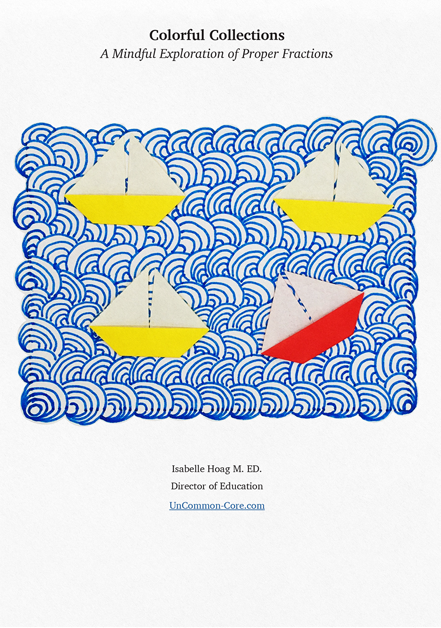
Is All Math Counting?
Counting by whole numbers is the basis for addition, subtraction, multiplication, and division. Children spend years learning to count before they step foot in kindergarten. ‘Counting on’ is a popular addition strategy that we teach our students. Equally popular is ‘counting back’ when subtracting. Multiplication is known as ‘repeated addition’ and the reverse operation, division, can be explained as ‘repeated subtraction’. Counting is fundamental to understanding numbers.
It isn’t surprising that learning how to count by fractions is a fantastic introduction to working with rational numbers. Counting is a familiar skill, considered to be very easy, and yet, counting is complex. Counting by fractions supports students’ number sense, demonstrates where fractions belong on the number line, and helps students connect the familiar (whole numbers) with new ideas (rational numbers). Think of it this way, if your students couldn’t count by halves, thirds, fourths, or other fractions, what would you say about their understanding of fractions?
Most students quickly catch on to counting by fractions. Counting by fractions can develop into other useful activities:
- Counting by fractions with different denominators.
- Counting to higher and higher numbers.
- Taking turns counting in pairs or small groups.
- Drawing number lines that show counting by various fractions.
- Have them make a “slideshow” or series of drawings like a slideshow, using area models rather than number lines.
- And ?
Choral Counting by Fractions
Just like choral reading, choral counting is a fantastic introduction to fractions. Students who are uncertain about what to say can listen or even goof without anyone else noticing. Moreover, they hear the correct response immediately.
Tips for using the Count by Fractions slideshow.
- Preview the slideshow, speaker notes, and links before sharing.
- Introduce the slideshow by discussing each slide as needed before expecting students to watch on their own.
- Model the response you expect from your students.
- Make sure your students understand the big ideas about fractions before using the slideshow.
- Focus on the concepts your students are learning each time you use this activity.
- Let me know if you would like more slideshows like this! Isabelle@UnCommon-Core.com
The Counting by Fractions Slideshow

The Counting by Fractions slideshow has 67 slides. After the title slide, there are five slides that you can use to review fraction basics with your students. The speakers notes for these slides include questions to ask your class, suggested answers, and some links to further information. Students count by ones, halves, thirds, fourths, fifths, and tenths.

The distance between whole numbers on all the slides is the same. Bring your students’ attention to the fact that all the number lines are the same size. Invite them to explain what they notice about the title slide, shown above. Ask them to figure out which fractions will be counted on each number line shown. Have them notice that the distance between whole numbers is the same, and that the size of each fraction gets smaller as the denominators get larger.
The slides are intentionally plain allowing students to focus on the important information. This resource was designed to be used many times while your students study fractions. Bring their attention to different elements each time you use the slideshow; have them focus on the written words in the top line to start with, then have them focus on the numbers as they appear under the number line, or the words written on the second line. They can think about fractional representations of whole numbers, improper fractions, proper fractions, or how many unit fractions are needed to make each fraction they are counting.
Bookmark this page so you will always have quick access to the link and to updates.
Share This Story, Choose Your Platform!
Download Colorful Collections:
A Mindful Exploration of Proper Fractions
Help your students make sense of fractions.
I started teaching in 1987, which means I’ve collected many tips and tricks along the way. In this ebook, I share concepts, strategies, and classroom materials to help you make math sticky.
Along with this useful ebook, you will receive weekly emails from StickyMath@UnCommon-Core.com. I send information like: teacher tips, educational ideas, book reviews, curated lists, reviews of educational sites, and free first drafts of products that I’m creating for my TPT store. That way, you get helpful ideas and free stuff, while I get some feedback before I finalize products and put them up for sale.
I value your privacy. I will never sell your information. You may unsubscribe at any time.
All the best!
Isabelle
Isabelle Hoag M. Ed.

